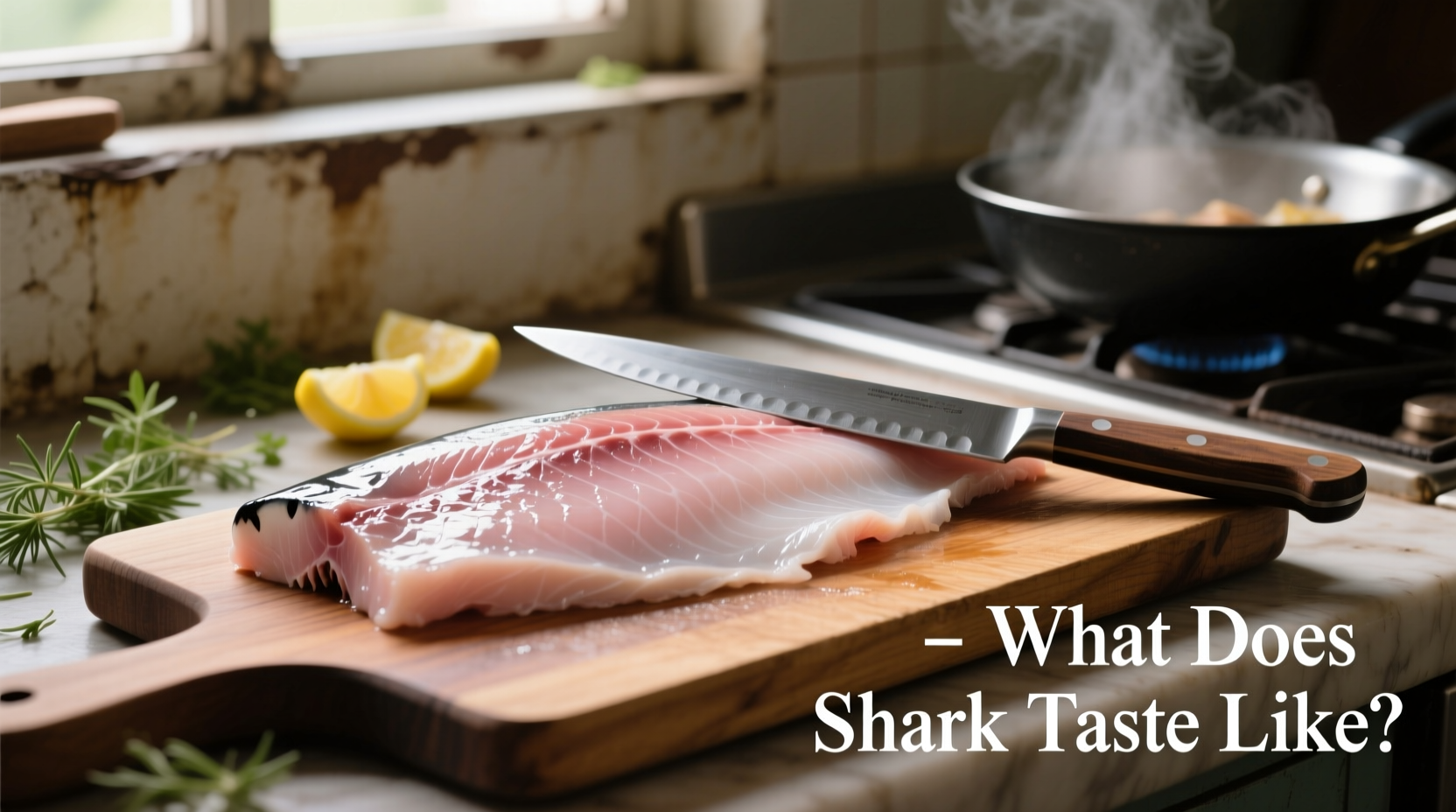Understanding Shark's Unique Culinary Profile
Contrary to what many expect, shark doesn't taste like typical fish. Its flesh has a dense, meaty texture closer to poultry than seafood, making what does shark taste like compared to chicken a common question among curious eaters. Professional chefs describe it as having a clean, slightly sweet flavor when properly handled, with minimal fishiness.
The texture resembles firm-fleshed fish like swordfish but with more substantial bite. This unique combination explains why shark appears in traditional dishes across coastal communities worldwide. However, improper handling leads to that notorious ammonia flavor many associate with shark meat.
| Shark Species | Taste Profile | Texture | Culinary Recommendation |
|---|---|---|---|
| Mako | Mild, slightly sweet | Firm, meaty | Best for first-time eaters; excellent grilled |
| Thresher | Moderate flavor | Dense, steak-like | Ideal for stews and curries |
| Tiger | Stronger, more pronounced | Very firm | Requires extensive preparation; best for experienced palates |
| Hammerhead | Mild to moderate | Firm with fine grain | Excellent for ceviche when very fresh |
Why Proper Preparation Makes All the Difference
The critical factor determining what does shark taste like when cooked properly versus unpleasantly comes down to immediate post-catch handling. Unlike most fish, shark meat contains high levels of urea that converts to ammonia as it decomposes. Traditional fishing communities have developed specific techniques to address this:
- Immediate bleeding - Cutting arteries right after catch prevents urea buildup
- Soaking in milk or acidic solutions - Neutralizes remaining ammonia compounds
- Quick freezing - Commercial operations use flash-freezing to preserve quality
According to the National Oceanic and Atmospheric Administration (NOAA) Fishery Services, "Proper handling of shark begins the moment it's caught. The window for optimal quality is narrow—within 15 minutes for bleeding to be most effective." Their seafood handling guidelines emphasize that delayed processing creates irreversible ammonia flavors.

Cultural Context of Shark Consumption Worldwide
Shark has been part of human diets for centuries, with preparation methods varying dramatically across cultures. In Iceland, hákarl (fermented shark) represents a traditional delicacy dating back to Viking times, though its strong ammonia flavor challenges even experienced palates.
Hawaii's traditional 'ulu'ulu (red snapper) sometimes includes shark in poke bowls, while Japan features shark in sashimi when exceptionally fresh. Coastal communities in Central America commonly prepare shark in ceviche, leveraging citrus to neutralize any potential off-flavors.
Food anthropologists note that shark consumption follows distinct regional patterns. As documented in the Journal of Ethnobiology, "Coastal communities with historical shark fishing traditions developed sophisticated preparation methods that western consumers are only now beginning to appreciate." This explains why what does shark taste like in different cultures varies so significantly.
Safety and Sustainability Considerations
Before trying shark, consider these important factors:
Mercuy Content
Larger shark species accumulate higher mercury levels. The FDA recommends limiting consumption of shark, swordfish, and king mackerel due to mercury concerns, particularly for pregnant women and children. Smaller species like dogfish contain lower mercury levels.
Sustainability Issues
Many shark populations face overfishing threats. The International Union for Conservation of Nature (IUCN) lists several commonly consumed species as vulnerable or endangered. Look for MSC-certified shark products when available, though options remain limited compared to other seafood.
Food Safety
Shark meat requires careful handling due to rapid urea conversion. The European Food Safety Authority notes that "shark products showing ammonia odor should be discarded as they indicate improper handling that cannot be reversed through cooking." Always purchase from reputable sources that follow proper handling protocols.
Where and How to Try Shark Responsibly
If you're curious about what does shark taste like for first-time eaters, consider these approaches:
- Start with mako shark at a reputable seafood restaurant known for sustainable practices
- Try it prepared as ceviche, which showcases the mild flavor while ensuring freshness
- Ask about the species and handling practices—the best establishments will know their supply chain
- Consider dogfish as a more sustainable alternative with similar flavor profile
Chefs specializing in sustainable seafood recommend treating shark like a premium protein. "Don't drown it in heavy sauces," advises culinary expert Lisa Chang. "Let the subtle flavor shine through simple preparations like grilling with citrus and herbs." This approach reveals why properly handled shark remains a prized ingredient in coastal cuisines worldwide.
Frequently Asked Questions
Does shark taste fishy?
Properly handled shark doesn't have a strong fishy taste. When immediately bled after catch and properly stored, shark meat has a mild, slightly sweet flavor with minimal fishiness. The misconception about shark being fishy comes from improper handling, which allows urea to convert to ammonia, creating an unpleasant taste.
How does shark compare to other seafood?
Shark has a firm, meaty texture more similar to chicken or alligator than typical fish. Flavor-wise, it's milder than tuna but firmer than cod. Many chefs describe it as occupying a middle ground between swordfish and halibut in terms of texture, with a cleaner taste profile than oily fish like mackerel.
Why does some shark taste like ammonia?
Shark meat contains high levels of urea that converts to ammonia as it decomposes. If not bled immediately after catching, this process creates an unpleasant ammonia flavor that cannot be removed through cooking. Proper handling within 15 minutes of catch prevents this issue, which is why freshness and handling protocols are critical for quality shark meat.
Is it safe to eat shark regularly?
The FDA recommends limiting shark consumption due to mercury concerns, especially for pregnant women and children. Larger shark species accumulate higher mercury levels. Smaller species like dogfish contain lower mercury but still shouldn't be consumed daily. Sustainability concerns also make regular consumption problematic, as many shark populations face overfishing threats.
What's the best way to cook shark?
The best cooking methods for shark include grilling, pan-searing, or preparing as ceviche when extremely fresh. Because of its firm texture, it holds up well to high-heat cooking. Marinating in acidic ingredients like citrus or vinegar before cooking helps neutralize any potential ammonia compounds. Avoid overcooking, as shark can become dry. Simple preparations with herbs and citrus allow the mild flavor to shine.











 浙公网安备
33010002000092号
浙公网安备
33010002000092号 浙B2-20120091-4
浙B2-20120091-4